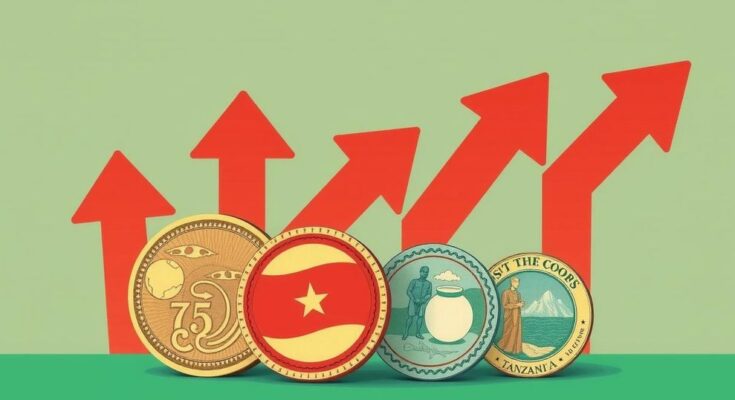Tanzania’s economy is expanding, yet its currency, the shilling, has decreased by 8.9% this year, making it the world’s poorest performer. The decline is attributed to rising imports and increasing public debt related to major infrastructure projects. Experts anticipate further depreciation before stabilization of the currency occurs, even as GDP growth is projected at 6%.
Tanzania’s economy is experiencing growth; however, the Tanzanian shilling has depreciated by 8.9% this year, rendering it the worst-performing currency globally. This decline can be attributed to increasing imports and mounting public debt stemming from significant infrastructure initiatives. Analysts foresee additional weakening of the shilling prior to its eventual stabilization. Despite the potential advantages from economic growth, it may be some time before the shilling reflects such benefits.
On a recent assessment, the Tanzanian shilling fell further to 2,645.10 per dollar, marking its lowest closing level since late November. Factors contributing to this depreciation include a widening current-account deficit and seasonal liquidity challenges, as highlighted by Shani Smit-Lengton, a senior economist at Oxford Economics Africa. Although the country anticipates a GDP growth of 6% this year, the currency remains under pressure.
The government is aggressively pursuing infrastructure development, including significant projects such as a deep-water container port in Bagamoyo and a $5 billion East African Crude Oil Pipeline designed to connect Uganda’s oil fields to the port of Tanga. Furthermore, the establishment of a substantial $42 billion liquefied natural gas facility is in progress, involving collaborations with prominent energy corporations like Shell, Equinor, and Exxon Mobil. Although these efforts promise long-term economic growth, they simultaneously exacerbate the decline of the Tanzanian shilling.
According to the Bank of Tanzania, imports of goods and services recorded a 5% increase over the year leading to January, totaling $16.9 billion. This rise was largely due to heightened acquisitions of industrial supplies and transportation equipment, indicative of growth within the manufacturing, construction, and transportation sectors. Concurrently, national debt remained largely stable at $47.6 billion, with external debt increasing by 11.5% to $33.9 billion, which further pressures the Tanzanian shilling amidst ongoing economic expansion.
In summary, while Tanzania is witnessing economic growth, the Tanzanian shilling faces substantial challenges, having dropped 8.9% this year, making it the weakest performing currency globally. Rising imports and a growing public debt—from extensive infrastructure projects—are central factors influencing this decline. Analysts predict that the currency may continue to weaken before achieving stabilization, despite the long-term benefits expected from ongoing investments in infrastructure.
Original Source: africa.businessinsider.com




